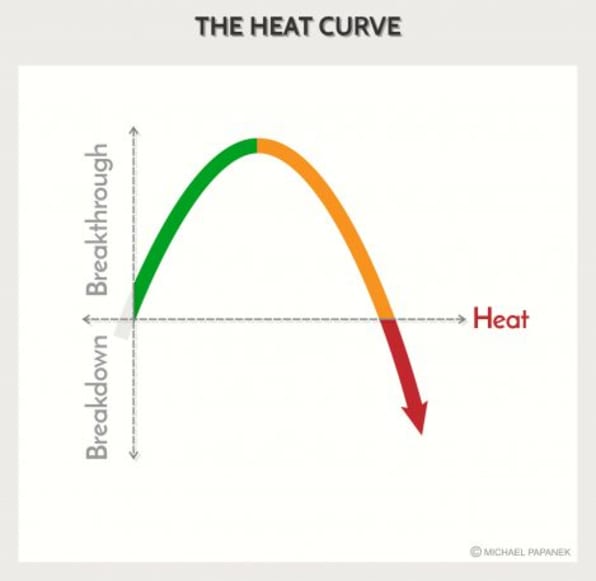Why Your Own Resilience Matters Less Than Your Team’s
After many years studying hundreds of babies born on Kauai, Hawaii, beginning in 1955, psychologists Emmy Werner and Ruth Smith discovered something surprising. Of the children deemed “at risk” due to their family environments, a sizable minority exhibited no negative effects. Even more astounding, most of this “vulnerable but invincible” group had overcome these obstacles by their mid-30s. Instead of succumbing to delinquency, academic difficulties, and health problems, they’d “bounced back” from tremendous adversity. In the decades that followed, researchers like Norman Garmezy created a new field of study around the phenomenon, which they called “resilience.”
In business today, the term retains its developmental psychology origins; it’s still largely considered an individual trait. But if you’re looking to build resilient teams or entire organizations, it’s the resilience of all those relationships that may matter even more. After all, you can hire as many resilient leaders as you like, but they can quit and go be resilient someplace else.
Why Resilient Leaders Aren’t Enough
In professional workshops, resilience experts like to mention the British explorer Ernest Shackleton who, on his third expedition to the Antarctic, in 1915, had to abandon his ship—the Endurance—when it became trapped in the ice. And sure enough, it’s a great tale of actual endurance: Shackleton’s persistence and courage in the face of overwhelming odds ensured all crew members got home safely. Unfortunately, the story is a red herring for the way team resilience actually works today.
It’s no surprise that there’s a strong correlation between effective leadership and the characteristics common among resilient individuals—which include self-reliance, an internal locus of control, a growth mind-set, strong problem-solving abilities, and good interpersonal skills. Indeed, resilience experts at Sloan Group International reported in a recent presentation that, based on the available research, “people who self-select into a leadership role tend to have a higher ability to deal with stress and hold a high amount of resilience.” Vindication for the Shackleton model, right?
Sure, but that model may deliver fewer returns as the workplace evolves. The more distributed leadership becomes, and the more collaboratively teams are asked to work, the fewer chances there are for Shackletons to come along and save the day when things go awry. But all isn’t lost; it simply means shifting our focus from developing resilient leaders toward developing collectively resilient groups.
How? The first step is to start thinking of resilience more as a process than as an attribute or an outcome. We already know that resilience is predicated on a combination of internal assets and external resources—which makes it highly contextual. Unfortunately, you can never arm yourself ahead of time with a handy checklist of all the external stressors you’re likely to experience before entering a tough situation.
Nor has any research we’ve read detailed the precise ratio between an person’s temperamental qualities and the magnitude of environmental stressors against which they’re most resilient. As researchers Fergus and Zimmerman put it in a 2005 paper in the Annual Review of Health, all this “makes it difficult to identify universal promotive factors and raises concerns that asset lists may be interpreted to operate in the same manner for all groups, all contexts, or all outcomes.” Or in plain English: It depends.
Riding The Heat Curve
So where does this leave your team? Instead of focusing just on each team member’s individual skills and qualities, it’s more helpful to pay attention to how much pressure the whole group is facing. Keep piling on ever bigger sales targets or changing mandates from on high, and eventually, even the most resilient individual is likely to break down. In our new book, we refer to this experience as a “heat curve,” which models what tends to happen as environmental stressors intensify.

At first, the ability to achieve breakthroughs actually increases, as everyone’s inspired to share great ideas and own them as a team. At some point, however, the heat becomes too much, and the team’s ability to handle the increased stress plummets. The ideal is to make sure your team stays on the rising edge of the curve for longer, even as the heat goes up. But just putting a resilient leader in charge won’t cut it. Instead, each team member needs to have a resilient relationship with the rest of the group—thereby creating a team of people that becomes stronger and continues to work well together as the pressure rises.
Here are three practical approaches to help increase team resilience:
1. Get to know each other before you try to work together. Make sure each person knows everyone else in the team as a person. We’ve seen even the most combative groups (including labor-management relationships) achieve amazing performance and ride the heat curve higher together when people share something personal and meaningful about themselves—not just their names, ranks, and years on the job. It’s amazing how simple and effective it can be to go one step beyond the usual icebreaker.
2. Opt for transparency. The economist Joseph Stiglitz once pointed out that “It’s trust, not money, that makes the world go around.” It’s easier to talk about building a culture of trust than to create one. But one good place to start is just by sharing as much as you know as soon as you know it with the entire group. Without this transparency, we tend to doubt each other’s motives. Team members need to know they’ll be supported when they take risks in uncertain circumstances—especially when things don’t go as planned.
3. Don’t waste time moving from talk to action. As Doug Conant, the former CEO of Campbell Soup, once said, “You can’t talk your way out of something you behaved your way into.” Evidence creates beliefs. Which is why any effective leadership—formal or informal—is all about the things you do, not what you say. Instead of team members hearing that management empathizes with their challenges, their collective resilience depends more on actually getting the resources to overcome them.
Bottom line: Most of the time, we endure best when we endure together.
Michael Papanek and Liz Alexander are coauthors of From Breakdown to Breakthrough: Forging Resilient Business Relationships in the Heat of Change.
(48)



